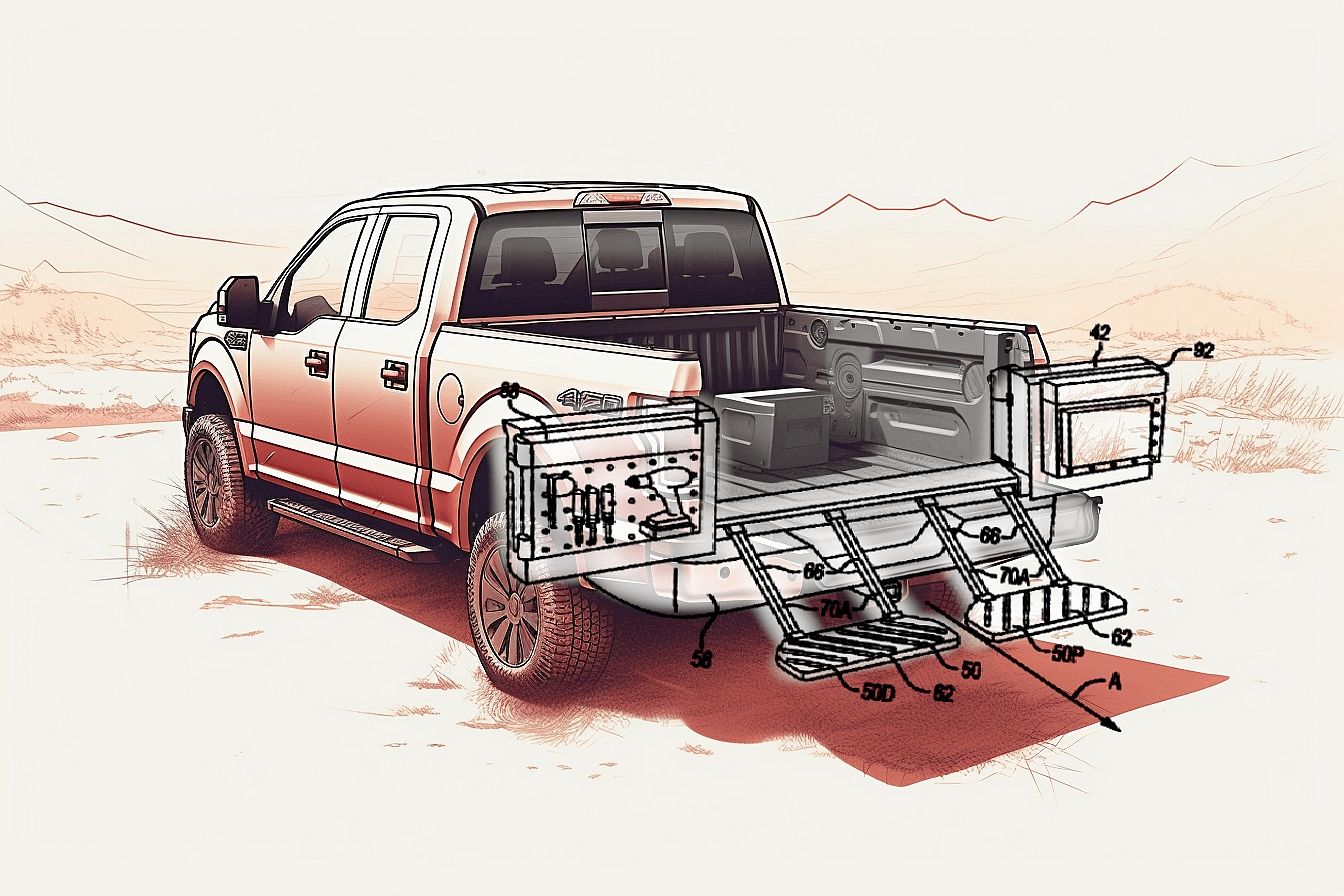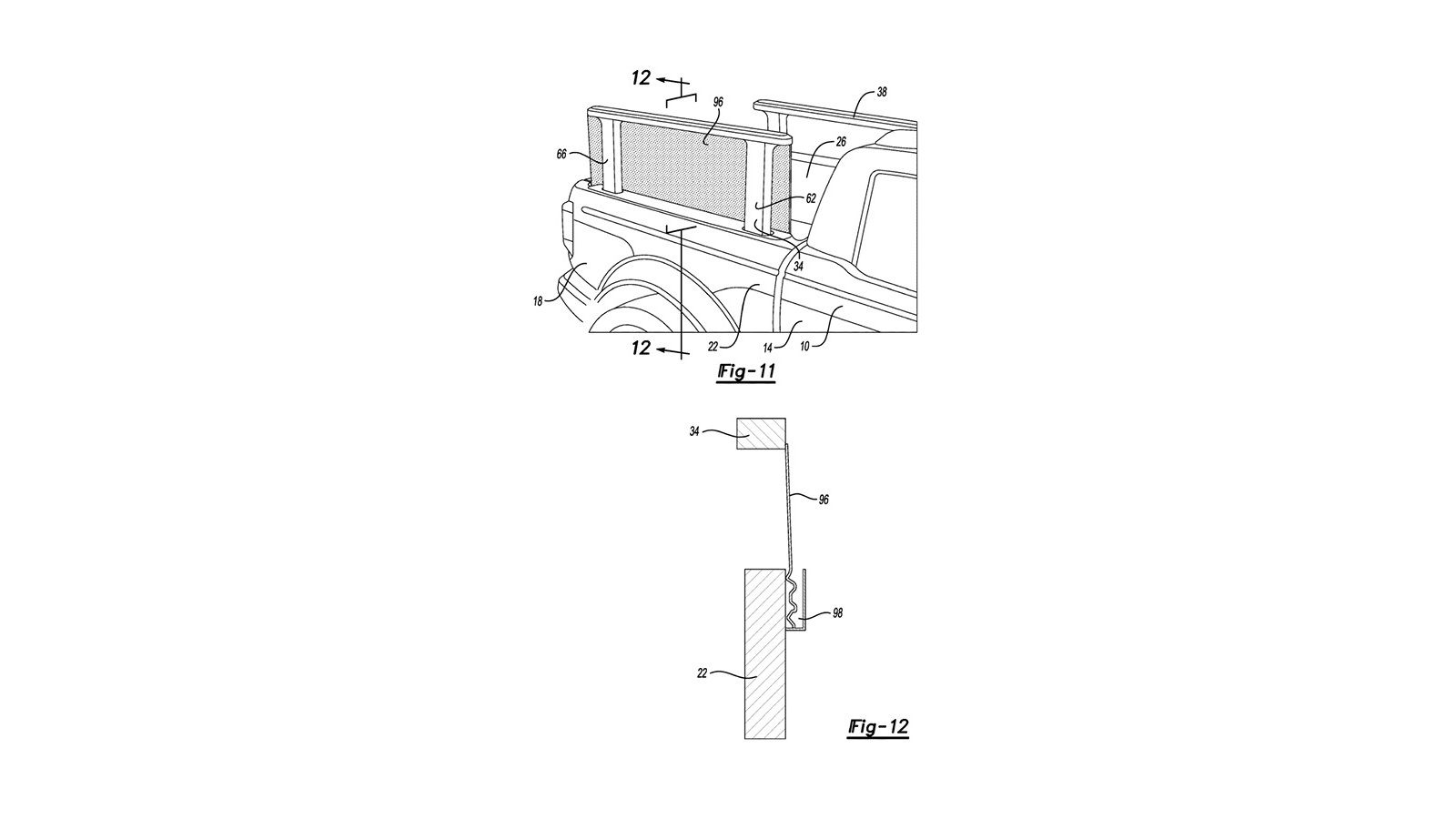Ford Develops Extendable Truck Bed Rails For Maximum Cargo Security

Ford Develops Extendable Truck Bed Rails For Maximum Cargo Security
Ford has filed numerous patents for inventions relating to truck beds in recent months, and now it’s put many of the ideas behind these patents into what may be its most ambitious cargo management system yet – one that can weigh and load cargo into your F-150, and then make that cargo as aerodynamically efficient as possible.
The new patent, discovered by CarBuzz, was filed with the United States Patent and Trademark Office yesterday, and it may be one of the Blue Oval’s most ambitious ideas yet. It also appears to be the one most likely to make production because the specifications are so detailed.
We’ll try to keep focused on the fundamentals, but what you need to know is that Ford has outlined the materials, motors, and even the type and size of bolts that would be ideal for its design. Basically, this isn’t an abstract idea but one that could be realized with few pre-production updates, if any.
As the above images show, actuated arms would reside within the walls of the truck bed. At the press of a button, two arms would raise up from either wall, each connected to its roommate by a crossbar. A crossbar is fundamental to several Ford truck patents, and in this case, it’s no less critical. Each one has the ability to rotate 180 degrees in either direction. When turning inward, these create a cross-member that spans the width of the bed.
When one of these bars extends outward, it can extend over the side of the bed. Ford specifically mentions a “16-inch 6,000 Newton electric linear actuator” on each side, with each offering the ability to lift up to 1,320 pounds. A mechanic, for example, could easily load an engine into the bed. The system would be capable of assessing the weight before attempting to load it, but once it’s in, even smarter ideas come to life.
With the cargo in place, it must be secured. To do this, a cargo net could be attached across the bed, with the rails lowering until they meet a first point of resistance. At this point, they retract at a very low speed to secure the cargo until a second predetermined resistance point is reached. If the cargo extends higher than the cabin of the truck, spoiler mode could be activated: the crossbars could rotate inward to act as spoilers (which are not the same as wings) that aim to smooth the airflow over the cargo. But if the cargo is only taller than the tailgate, one crossbar (or more) could be aligned vertically to create a virtually taller tailgate. This would reduce turbulence in the bed.

Related
Ford Has Completely Reinvented Truck Beds And Tailgates
Expanded practicality need not be difficult to realize.
If spoiler mode is activated and there is no cargo detected, the truck will assume that it must go into a performance mode. At this point, the owner could attach a cover over the crossbars, and these crossbars could raise and orient themselves to minimize drag or increase rear downforce. Indeed, when the hard work is done, this cargo management system lets its hair down to become active aero.
Another function included here is that of deployable screens that can partially conceal the contents of the bed, at least from the side of the truck. This area has been explored by Ford in another patent, where the Blue Oval improves on Cybertruck tonneau cover design, and we imagine the two ideas could be combined.
As mentioned, the patent documentation is relatively detailed, describing even the size of the shoulder bolts (12 millimeters, in case you were wondering). It also describes that certain bushings would be made from an “ultra-high molecular weight polyethylene.” Clearly, there are several considerations towards real production viability, but this only indicates a potential introduction, not confirm it. On balance, we suspect it may be too costly to implement now, but we bet that robotic attachments will be a part of (or optional on) a truck you can buy someday soon.




Responses